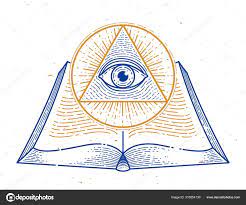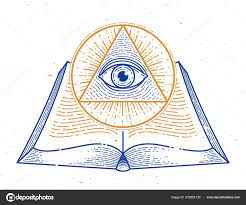
The books that are part of the Bible were originally written on papyrus scrolls. Later, copies of the original text were made, and these were copied in turn again and again. As papyrus decomposes over time, the oldest texts of the Bible that exist today are just copies of copies of copies.
When reading the Bible, one should bear in mind that copyists and translators may have made mistakes and that religious authorities may have altered the original text when they assumed that they found errors in it.
All current Bibles are copies of three different versions –the Hebrew Masoretic Text, the Greek Septuagint, and the Samaritan Pentateuch– which are supposed to be copies of copies of the original text. Since these do not coincide on some important points, someone must have altered the original text. Since it is difficult to find out for sure which version is a forgery, one may think that today it is impossible to know what these texts originally tried to convey to us.
However, many centuries after these texts were created, I have discovered that the ages of the first 7 patriarchs add up to 7 x 7 x 120 (years) – 1. Enoch, the seventh patriarch, died at 365 years of age, a figure that refers to the days in a year, and with the additional day of a leap year we get exactly 7 x 7 x 120 (years). And thanks to this discovery, one finally understands why God said: “Their days will be 120 years”.[1]
The fact that these three original versions offer different figures for the patriarchs aroused my curiosity and led me to understand why these figures had been altered.
The different figures given by the Hebrew Masoretic Text and the Greek Septuagint are intriguing because the latter is a translation of the former. According to legend, the six translators from each of the twelve tribes who translated the text later found that their translations matched. Since it is impossible that these people did not realize that their Greek version offered different ages, that legend must have been invented to give credibility to the Greek Septuagint.
Both with the figures of the Hebrew Masoretic Text and those of the Greek Septuagint, the ages of the first 7 patriarchs add up to 7 x 7 x 120 (years) – 1. However, only in the Masoretic Hebrew Text do the ages of the next 13 patriarchs add up to 7 x 7 x (20 (years) – 13 (or 1 year per patriarch) and the ages of the 26 patriarchs from Adam to Moses add up to 105 x 120.
Why were the figures changed in the Greek Septuagint? In their translation, the patriarchs are often 100 years older when they engender their son and thus 3412 years elapsed between the births of Adam and Abraham, instead of the 1946 years according to the Masoretic Hebrew Text. We thus see that they altered the chronology in the Old Testament to make it fit with the idea that the Greek world had about universal chronology.
The Bible is considered to a sacred book. I discovered that the ages of the first 7 patriarchs add up to 7 x 7 x 120 (years) – 1 because I am interested in the origin of words and had learned that they originally called a book ‘sacred’ when they considered that it held secrets.
The words sacred and secret come from the Latin verb ‘to segregate’. By calling that part of the temple sacred that only the high priest could access, because it was segregated from the rest, they associated sacred with secret.
Thanks to this interest in the origin of words, I also realized that the word religion comes from the Latin verb legere, which first meant to join and then to read. Therefore, originally, the word religion referred to reading a sacred book many times –rereading it– in order to discover its secrets. That a sacred book tells the truth is a later idea.
I intuited that the ages of the first 20 patriarchs had a secret significance after observing that of the 50 digits, 24 ended with 0 (and 8 in 00); 13 ended with 5; that none ended with 1 or 6; and that the ages at which the last 10 patriarchs had their heir totalled 490 or 7 x 7 x 10.
As I read Genesis over and over again, at one point I paid attention to the story of the animals that Noah was asked to carry with him in the ark: 1 pair of each species of impure animals and 7 pairs of each species of clean animals. Since later these pairs had to repopulate the Earth, I almost immediately realized that impure refers to incest and inbreeding.
It took me much longer to discover that to repopulate the Earth from 7 pairs of each species of pure animals, the best way to avoid incest and inbreeding is that, with each new generation, each of the 7 male lineages (always from father to son) interbreed successively with each of the 7 female lineages (always from mother to daughter), in such a way that, 8 generations later, it is once again the turn of the first female lineage.
The fact that 8 generations separate Enoch from God (Adam’s father) made me see that both could be the fruit of the same male lineage crossing again with the same female lineage and that this would explain why the Bible indicates that Enoch walked with God.
Only after I made all these reflections did I add up the ages of the first seven patriarchs to see if perhaps I could learn something from them. The number 5,879 didn’t mean anything to me, but when I divided it by 120, I saw that the result was close to 49.
To make this discovery about the ages of the patriarchs I had to read Genesis over and over again and had to reflect deeply about several issues. To comprehend what this discovery meant I had to do the same.
Like the other books of the Pentateuch –Jews call the first five books the Torah– Genesis was originally written in ancient Hebrew, a language that only recognized consonants. The fact that also the first alphabet, of Phoenician origin, only recognized consonants helped me realize that often words with the same consonant combination have something in common.
This is the case with the Greek words genesis and gnosis. Genesis means creation. Gnosis means knowledge and also understanding, wisdom, intuitive knowledge or secret knowledge. This last meaning is due to Gnosticism, a Christian movement that the Church considered a heresy.
Jews call the first book of the Torah Bereshit because it begins with this magical Hebrew word. By calling it Genesis, the early Christians encouraged people to study it in order to discover its secret wisdom.
Bible references: [1] Gn5:3-23 / Gn6:3
The next 10 articles are:
3 PHILOSOPHY versus THEOLOGY 0 In the beginning
4 PHILOSOPHY versus THEOLOGY 0 God
5 PHILOSOPHY versus THEOLOGY 0 Adam and Eve
6 PHILOSOPHY versus THEOLOGY 0 The snake
7 PHILOSOPHY versus THEOLOGY 0 Cain and Abel
8 PHILOSOPHY versus THEOLOGY 0 Cain’s descendants
9 PHILOSOPHY versus THEOLOGY 0 The Flood
10 PHILOSOPHY versus THEOLOGY 0 Noah
11 PHILOSOPHY versus THEOLOGY 0 Evil since childhood
12 PHILOSOPHY versus THEOLOGY 0 Repopulating the Earth

